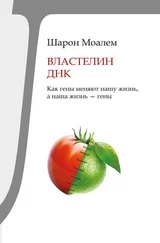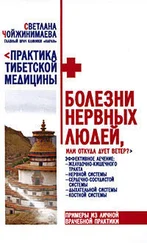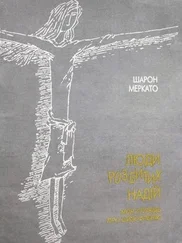Еще более подробную информацию про гвинейского червя – в том числе как правильно произносить его название на латыни – ищите на официальном сайте Центра контроля и профилактики заболеваний США www.cdc.gov/Ncidod/dpd/parasites/dracunculiasis/factsht_dracunculiasis.html.
Наконец, подробный исторический обзор про гвинейского червя читайте на стр. 687–689 в:
K. F. Kiple, The Cambridge World History of Human Disease (New York: Cambridge University Press, 1993).
84. Говоря про различия иммунных систем, мы ссылаемся на Главный комплекс гистосовместимости (ГКГС), названный так потому, что изначально он был выявлен и использован для проверки совместимости доноров органов. ГКГС – это своего рода клеточный штрихкод, который позволяет организму отличить друга от неприятеля. Глава ссылается на следующую работу:
C. Wedekind, T. Seebeck, F. Bettens, and A. J. Paepke. 1995. MHC-dependent mate preferences in humans. Proc Biol Sci 260(1359):245–249;
Более легкий рассказ, описывающий это явление:
Martie G. Haselton, “Love Special: How to Pick a Perfect Mate,” New Scientist, 29 апреля 2006.
85. F. Backhed, R. E. Ley, J. L. Sonnenburg, et al. 2005. Host-bacterial mutualism in the human intestine. Science 307(5717):1915–1920;
S. R. Gill, M. Pop, R. T. Deboy, et al. 2006. Metagenomic analysis of the human distal gut microbiome. Science 312(5778):1355–1359;
Rick Weiss, “Legion of Little Helpers in the Gut Keeps Us Alive,” Washington Post, 5 июня 2006;
C. L. Sears. 2005. A dynamic partnership: celebrating our gut flora. Anaerobe 11(5):247–251;
F. Guarner and J. R. Malagelada. 2003. Gut flora in health and disease. Lancet 361(9356):512–519;
M. Heselmans, G. Reid, L. M. Akkermans, et al. 2005. Gut flora in health and disease: potential role of probiotics. Curr Issues Intest Microbiol 6(1):1–7;
E. D. Weinberg. 1997. The Lactobacillus anomaly: total iron abstinence. Perspect Biol Med 40(4):578–583;
S. Moalem, E. D. Weinberg, and M. E. Percy. 2004. Hemochromatosis and the enigma of misplaced iron: implications for infectious disease and survival. Biometals 17(2):135–139.
86. W. G. Eberhard. 2000. Spider manipulation by a wasp larva. Nature 406(6793):255–256;
W. G. Eberhard. 2001.Underthe influence: webs and building behavior of Plesiometa argyra (Araneae, Tetragnathidae) when parasitized by Hymenoepimecis argyraphaga (Hymenoptera, Ichneumonidae). Journal of Arachnology 29:354–366;
W. G. Eberhard. 2000. The natural history and behavior of Hymenoepimecis argyraphaga (Hymenoptera, Ichneumonidae) a parasitoid of Plesiometa argyra (Araneae, Tetragnathidae). Journal of Hymenoptera Research 9(2):220–240.
Для тех, кто ищет что-то на более легком языке:
Nicholas Wade, “Wasp Works Its Will on a Captive Spider,” New York Times, 25 июля 2000.
87. Приведенные в главе цитаты взяты из статьи BBC:
“Parasite’sWebofDeath”, 19 июля 2000;
Ссылка на оригинальную публикацию: news.bbc.co.uk/2/hi/science/nature/841401.htm.
88. D. Otranto and D. Traversa. 2002. A review of dicrocoeliosis of ruminants including recent advances in the diagnosis and treatment. VetParasitol 107(4):317–335.
Диаграмму, описывающую сложный жизненный цикл этого паразита, можно найти по ссылке:
www.parasitology.informatik.uniwuerzburg.de/login/b/me14249.png.php.
89. Shaoni Bhattacharya, “Parasites Brainwash Grasshoppers into Death Dive,” New Scientist, 31 августа 2005;
Оригинальная работа:
D. G. Biron, L. Marche, F. Ponton, et al. 2005. Behavioural manipulation in a grasshopper harboring hairworm: a proteomics approach. Proc Biol Sci 272(1577): 2117–2126;
F. Thomas, A. Schmidt- Rhaesa, G. Martin, et al. 2002. Do hairworms (Nematomorpha) manipulate the water seeking behavior of their terrestrial hosts? JEvolBiol 15:356–361.
Если вам повезет и ссылка окажется по-прежнему рабочей, то можете посмотреть онлайн-видео волосатика, покидающего своего несчастного тонущего носителя:
www.canal.ird.fr/canal.php?url=/prgrammes/recherches/grillons_us/index.htm.
90. Все про бешенство читайте на стр. 597–600 в:
K. J. Ryan, C. G. Ray, and J. C. Sherris, Sherris Medical Microbiology: An Introduction to Infectious Diseases (New York: McGraw- Hill, 2004).
91. J. Moore. 1995. The behavior of parasitized animals – when an ant is not an ant. Bioscience 45:89–96.
Подробнее про манипуляции паразитов читайте:
J. Moore, Parasites and the Behavior of Animals (New York: Oxford University Press, 2002).
Остальная информация была взята из личных интервью с профессором Муром.
92. Изображения T. Gondii под микроскопом:
http://ryoko.biosci.ohio-state.edu/~parasite/toxoplasma.html
Y. Sukthana. 2006. Toxoplasmosis: beyond animals to humans. Trends Parasitol 22(3):137–142;
E. F. Torreyand R. H. Yolken. 2003. Toxoplasma gondii and schizophrenia. Emerg Infect Dis 9(11):1375–1380;
S. Bachmann, J. Schroder, C. Bottmer, et al. 2005. Psychopathology in first-episode schizophrenia and antibodies to Toxoplasma gondii. Psychopathology 38(2):87–90;
J. P. Webster, P. H. Lamberton, C. A. Donnelly, and E. F. Torrey. 2006. Parasites as causative agents of human affective disorders? The impact of anti-psychotic, mood- stabilizer and anti-parasite medication on Toxoplasma gondii’s ability to alter host behaviour. ProcBiolSci 273(1589):1023–1030.
93. Цитата заимствована из:
Jennifer D’Angelo, “Feeling Sexy? It Could Be Your Cat,” Fox News, 4 ноября 2003.
Читайте также:
A. Skallova, M. Novotna, P. Kolbekova, et al. 2005. Decreased level of novelty seeking in blood donors infected with Toxoplasma. Neuro Endocrinol Lett 26(5):480–486;
J. Flegr, M. Preiss, J. Klose, et al. 2003. Decreased level of psychobiological factor novelty seeking and lower intelligence in me latently infected with the protozoan parasite Toxoplasma gondii: dopamine, a missing link between schizophrenia and toxoplasmosis? Biol Psychol 63(3):253–268;
J. Flegr, J. Havlicek, P. Kodym, et al. 2002. Increased risk of traffic accidents in subjects with latent toxoplasmosis: a retrospective case-control study. BMC Infect Dis 2:11;
M. Novotna, J. Hanusova, J. Klose, et al. 2005. Probable neuroimmunological link between Toxoplasma and cytomegalovirus infections and personality changes in the human host. BMC Infect Dis 5:54;
R. H. Yolken, S. Bachmann, I. Ruslanova, et al. 2001. Antibodies to Toxoplasma gondii in individuals with first-episode schizophrenia. Clin Infect Dis 32(5):842–844;
L. Jones-Brando, E. F. Torrey, and R.Yolken. 2003.Drugs used in the treatment of schizophrenia and bipolar disorder inhibit the replication of Toxoplasma gondii. Schizophr Res62(3):237–244.
Читать дальше
Конец ознакомительного отрывка
Купить книгу











